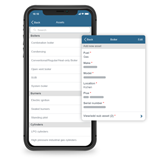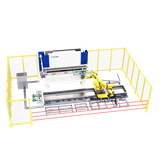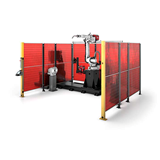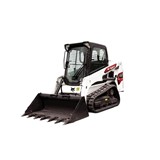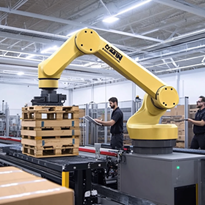Investing in a robotic palletiser can significantly enhance your warehouse's efficiency and productivity. However, like any other piece of equipment, it is crucial to understand the manufacturer warranties associated with robotic palletisers. Manufacturer warranties provide valuable protection and coverage in case of malfunctions or defects. In this article, we will explore the key aspects of manufacturer warranties for robotic palletisers in Sydney, helping you make informed decisions and maximize the benefits of your investment.
What is a Manufacturer Warranty?
A manufacturer warranty is a written guarantee provided by the manufacturer of a product, outlining the terms and conditions of coverage. It serves as a promise from the manufacturer to the buyer, assuring that the product will perform as intended within a specified period. Understanding the details of the warranty is vital to ensure you receive the necessary support and assistance if any issues arise with your robotic palletiser.
Components of a Manufacturer Warranty
Manufacturer warranties for robotic palletisers typically consist of several key components:
1. Warranty Period
The warranty period specifies the duration for which the manufacturer guarantees the functionality of the robotic palletiser. It is essential to be aware of this period as it determines how long you are entitled to receive repairs or replacements for covered issues.
2. Covered Components and Defects
The manufacturer warranty will outline the specific components and defects covered under the warranty. This includes mechanical, electrical, and software-related issues that may occur during the normal operation of the robotic palletiser.
3. Exclusions and Limitations
Manufacturer warranties often have exclusions and limitations that define certain situations or circumstances not covered by the warranty. These exclusions may include damage caused by improper use, unauthorized modifications, or natural disasters. It is crucial to carefully review these exclusions to understand the scope of coverage provided.
4. Repair or Replacement Procedures
The warranty will specify the procedures for repair or replacement in case of covered defects. It may outline whether repairs will be conducted on-site or if the robotic palletiser needs to be shipped to a service center. Understanding these procedures will help you take appropriate action when seeking warranty services.
5. Contact Information and Support
Manufacturer warranties will provide contact information for obtaining warranty support. This includes phone numbers, email addresses, or online support portals. It is advisable to keep this information readily available to facilitate a smooth warranty claim process.
Making the Most of Your Manufacturer Warranty
To ensure you make the most of your manufacturer warranty for your robotic palletiser, consider the following tips:
-
Read and Understand the Warranty: Take the time to thoroughly read and understand the terms and conditions of the manufacturer warranty. Familiarize yourself with the covered components, warranty period, and any exclusions or limitations.
-
Register Your Warranty: Some manufacturers require product registration to activate the warranty. Follow the registration process provided by the manufacturer to ensure your warranty coverage is in effect.
-
Adhere to Maintenance Guidelines: Manufacturers often provide specific maintenance guidelines to keep the robotic palletiser in optimal condition. Adhering to these guidelines is crucial to prevent voiding the warranty due to negligence or improper maintenance.
-
Keep Records and Documentation: Maintain records of your purchase receipts, warranty documentation, and any communication related to warranty claims. These records will serve as evidence and make the warranty claim process smoother, if needed.
-
Promptly Report Issues: If you encounter any issues or defects with your robotic palletiser, promptly report them to the manufacturer or authorized service center. Adhering to the specified reporting procedures will facilitate a timely resolution.
-
Follow Warranty Claim Procedures: When filing a warranty claim, ensure you follow the specified procedures outlined in the warranty documentation. Provide all requested information and documentation to expedite the resolution process
3 Main Types of Manufacturer Warranties
Manufacturer warranties for robotic palletisers generally fall into three main categories: limited warranties, extended warranties, and comprehensive warranties. Understanding the differences between these types is crucial to assess the level of coverage you can expect.
-
Limited warranties typically cover defects in materials and workmanship for a specific period, often ranging from one to three years. These warranties may vary in terms of coverage for parts, labor, or both.
-
Extended warranties provide additional coverage beyond the standard warranty period. They can be purchased separately and may cover specific components, parts, or even entire systems. Extended warranties offer a longer duration of protection but usually come at an additional cost.
-
Comprehensive warranties are the most extensive type of warranty. They provide coverage for a wide range of potential issues, including parts, labor, and even wear and tear. These warranties often come at a higher price but offer the most comprehensive protection.
Key Factors to Evaluate in Manufacturer Warranties
When evaluating manufacturer warranties for robotic palletisers, it is important to consider several key factors to ensure you are getting the best possible coverage.
- Warranty duration is a critical aspect to examine. A longer warranty period provides more protection against potential defects or malfunctions, giving you peace of mind over an extended period.
- Coverage for parts and labor is another crucial factor. A warranty that covers both parts and labor ensures that you won't incur additional costs for repairs or replacements during the warranty period.
- Exclusions and limitations must be carefully reviewed. Some warranties may have specific exclusions, such as damage caused by improper use or neglect. Understanding these limitations helps you assess the scope of coverage.
- In addition, it is important to consider the transferability of the warranty. If you plan to sell or transfer the robotic palletiser in the future, a warranty that can be transferred to the new owner adds value to your investment.
Warranty Claim Process
- Understanding the warranty claim process is essential to ensure a smooth experience in case you encounter any issues with your robotic palletiser. Familiarize yourself with the following aspects of the claim process:
- Reporting a warranty issue should be straightforward and easy. Determine the preferred method of reporting a warranty claim, whether it's through a dedicated hotline, email, or an online portal. Promptly reporting the issue will expedite the resolution process.
- Documentation requirements for warranty claims may vary between manufacturers. Ensure you understand the documentation needed to support your claim, such as proof of purchase, serial numbers, or photographs of the issue.
- When a warranty claim is filed, you should inquire about the repair or replacement options available. Some manufacturers may offer on-site repair services, while others may require you to ship the palletiser to a designated service center.
- Timelines for resolution are crucial to consider. Inquire about the expected time it will take for the manufacturer to resolve the warranty claim. A prompt and efficient resolution minimizes disruptions to your operations.
Evaluating Manufacturer Reputation
To assess the reliability and trustworthiness of a manufacturer, it is important to evaluate their reputation. Consider the following factors:
- Researching manufacturer history and track record helps you gauge their experience and expertise in producing robotic palletisers. Look for established manufacturers with a proven track record of delivering high-quality products and reliable customer support.
- Customer reviews and testimonials provide valuable insights into the experiences of other users. Read reviews and testimonials from customers who have used the manufacturer's robotic palletisers to gain a better understanding of their overall satisfaction and any potential issues.
- Consider any industry certifications and awards that the manufacturer has received. Certifications and awards are indications of their commitment to quality, innovation, and adherence to industry standards.
Comparing Warranty Terms and Conditions
- Carefully reviewing the warranty terms and conditions is essential to avoid any surprises and ensure you understand the extent of coverage. Consider the following steps:
- Thoroughly review the warranty documents provided by the manufacturer. Pay attention to the terms and definitions used to ensure you have a clear understanding of the warranty coverage.
- Identify any hidden costs or fees that may not be explicitly stated in the warranty document. For example, some warranties may require you to cover shipping costs or pay a deductible for each warranty claim.
Cost-Benefit Analysis of Warranties
Performing a cost-benefit analysis of the warranties offered can help you make an informed decision. Consider the following factors:
- Assess the initial investment cost of the robotic palletiser, including the price of the warranty itself. Compare this cost to the potential savings you may achieve by having warranty coverage for repairs or replacements.
- Calculate the potential savings from warranty coverage over the expected lifespan of the robotic palletiser. Consider the likelihood of encountering issues and the estimated cost of repairs or replacements without warranty coverage.
- Take into account the long-term maintenance and repair costs beyond the warranty period. Evaluate the manufacturer's reputation for reliability and durability to gauge the potential expenses you may incur after the warranty expires.
Additional Considerations
Apart from warranty coverage, there are other important factors to consider:
- Ensure the availability of technical support from the manufacturer. A responsive and knowledgeable support team can assist you in troubleshooting issues and provide guidance on maintenance and operation.
- Inquire about warranty extensions or upgrades that may be available. Some manufacturers offer the option to extend or upgrade the warranty coverage to provide additional protection beyond the standard terms.
Understanding Limitations and Exclusions in Robotic Palletiser Warranties
Understanding the limitations and exclusions in robotic palletiser warranties is crucial to avoid any surprises or misunderstandings regarding the scope of coverage. Manufacturers often include specific clauses that outline what is not covered under the warranty. By familiarizing yourself with these limitations and exclusions, you can assess the level of protection provided and make informed decisions.
-
Improper Use or Maintenance: Most warranties explicitly state that they do not cover damages caused by improper use or lack of proper maintenance. It is essential to follow the manufacturer's guidelines regarding installation, operation, and routine maintenance to ensure warranty coverage remains valid.
-
Normal Wear and Tear: Regular wear and tear that occurs over time due to normal usage is typically not covered by warranties. This includes expected deterioration of components or parts that naturally occurs with use. However, warranties may cover premature wear and tear or defects that occur earlier than expected.
-
Third-Party Modifications or Repairs: If unauthorized modifications or repairs are made to the robotic palletiser by third parties, the warranty may become void. Manufacturers often require that any repairs or modifications be carried out by authorized service technicians to maintain warranty coverage.
-
Acts of Nature or External Factors: Warranties generally do not cover damages resulting from acts of nature, such as floods, earthquakes, or other natural disasters. Additionally, damages caused by external factors like power surges, voltage fluctuations, or improper electrical supply may not be covered.
-
Consumable Components and Spare Parts: Consumable components or parts with a limited lifespan, such as belts, seals, or batteries, may have separate warranty terms. Manufacturers may offer a shorter warranty period or different terms for these components due to their expected wear and tear.
-
Non-Original Parts or Accessories: If non-original parts or accessories are used with the robotic palletiser, the warranty may be voided. Manufacturers typically recommend using genuine parts and accessories to maintain the warranty coverage.
-
Commercial Use Only: Manufacturers often specify that warranties are valid only for commercial use of the robotic palletiser. If the palletiser is used for non-commercial purposes or in a residential setting, the warranty may not apply.
-
Consequential or Indirect Damages: Warranties generally exclude coverage for any indirect or consequential damages resulting from the use or malfunction of the robotic palletiser. This may include loss of production, lost profits, or any other damages beyond the direct repair or replacement costs.
-
Transferability Restrictions: Some warranties may have restrictions on transferring the warranty to a new owner if the robotic palletiser is sold or transferred. It is essential to review the warranty terms to understand if and how the warranty can be transferred.
Tips and Strategies for Maximizing the Value of Your Robotic Palletiser Warranty
Investing in a robotic palletiser is a significant decision, and maximizing the value of your warranty is essential to protect your investment. Here are some tips and strategies to make the most out of your robotic palletiser warranty:
-
Read and Understand the Warranty Document: Take the time to thoroughly read and understand the warranty document provided by the manufacturer. Pay close attention to the terms, conditions, limitations, and exclusions. This will help you understand the coverage and avoid any misunderstandings.
-
Register Your Warranty: Many manufacturers require you to register your warranty within a specific timeframe after purchase. Make sure to complete the registration process promptly to ensure your warranty remains valid. Keep a copy of the registration confirmation for future reference.
-
Follow Proper Installation and Maintenance Guidelines: Adhere to the manufacturer's guidelines for installation, operation, and routine maintenance. Improper installation or neglecting maintenance can void the warranty. Regularly inspect and clean the robotic palletiser as recommended to prevent issues and maintain warranty coverage.
-
Keep Detailed Records: Maintain detailed records of your robotic palletiser's maintenance history, including dates, performed tasks, and any parts or components replaced. This documentation will serve as evidence of proper maintenance and can be valuable if a warranty claim arises.
-
Report Issues Promptly: If you encounter any issues with your robotic palletiser, report them to the manufacturer or authorized service center promptly. Delaying reporting may result in complications or potential denial of warranty claims. Follow the specified reporting procedures provided in the warranty document.
-
Preserve Original Packaging and Documentation: Safely store the original packaging, manuals, and documentation that came with your robotic palletiser. If the need arises to ship the palletiser for repairs covered under warranty, having the original packaging will ensure its safe transportation. Additionally, retaining all original documentation will be helpful for warranty claim purposes.
-
Work with Authorized Service Centers: If your robotic palletiser requires repairs or maintenance covered under warranty, always seek assistance from authorized service centers recommended by the manufacturer. Using unauthorized repair services may void the warranty. Authorized technicians have the expertise and access to genuine parts required for warranty repairs.
-
Keep Track of Warranty Expiration: Stay aware of the expiration date of your warranty. Mark it on your calendar or set a reminder so that you can plan for any necessary maintenance or repairs before the warranty coverage ends.
-
Consider Extended Warranty Options: If available, consider purchasing an extended warranty to extend the coverage beyond the standard warranty period. Extended warranties can provide additional peace of mind and protection against unforeseen issues in the future.
-
Maintain Good Communication: Establish and maintain good communication with the manufacturer's customer support team. They can provide guidance, answer any questions you may have, and assist you throughout the warranty period.



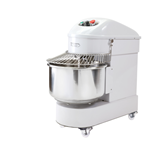



-160x160-state_article-rel-cat.png)




-160x160-state_article-rel-cat.png)

